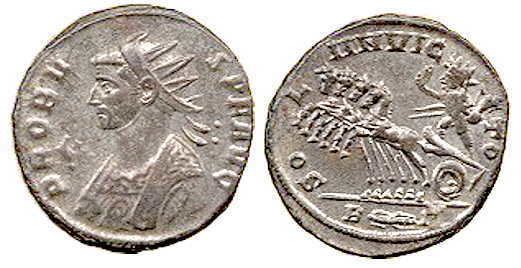 | ||
A radiant or radiate crown, also known as a solar crown or sun crown, is a crown, wreath, diadem, or other headgear symbolizing the sun or more generally powers associated with the sun. It typically takes the form of either a horned disc to represent the sun, or a curved band of points to represent rays.
In the iconography of ancient Egypt, the solar crown is taken as a disc framed by the horns of a ram or cow. It is worn by deities such as Horus in his solar or hawk-headed form, Hathor, and Isis. It may also be worn by pharaohs.
In Ptolemaic Egypt, the solar crown could also be a radiate diadem, modeled after the type worn by Alexander the Great (as identified with the sun god Helios) in art from the mid-2nd century BC onward. It was perhaps influenced by contact with the Shunga Empire, and a Greco-Bactrian example is depicted at the great stupa of Bharhut. The first ruler of Egypt to wear this version of a solar crown was Ptolemy III Euergetes (246–222 BC)
In the Roman Empire, the solar crown was worn by Roman emperors in association with the cult of Sol Invictus, influenced also by radiant depictions of Alexander. The solar crown worn by Constantine, the first emperor to convert to Christianity, was reinterpreted as representing the "Holy Nails".
